Cattleya's orchid: home care
Cattleya is a unique orchid species that is characterized by excellent appearance and easy maintenance. That is why the plant can be grown not only at home, but also in office premises.
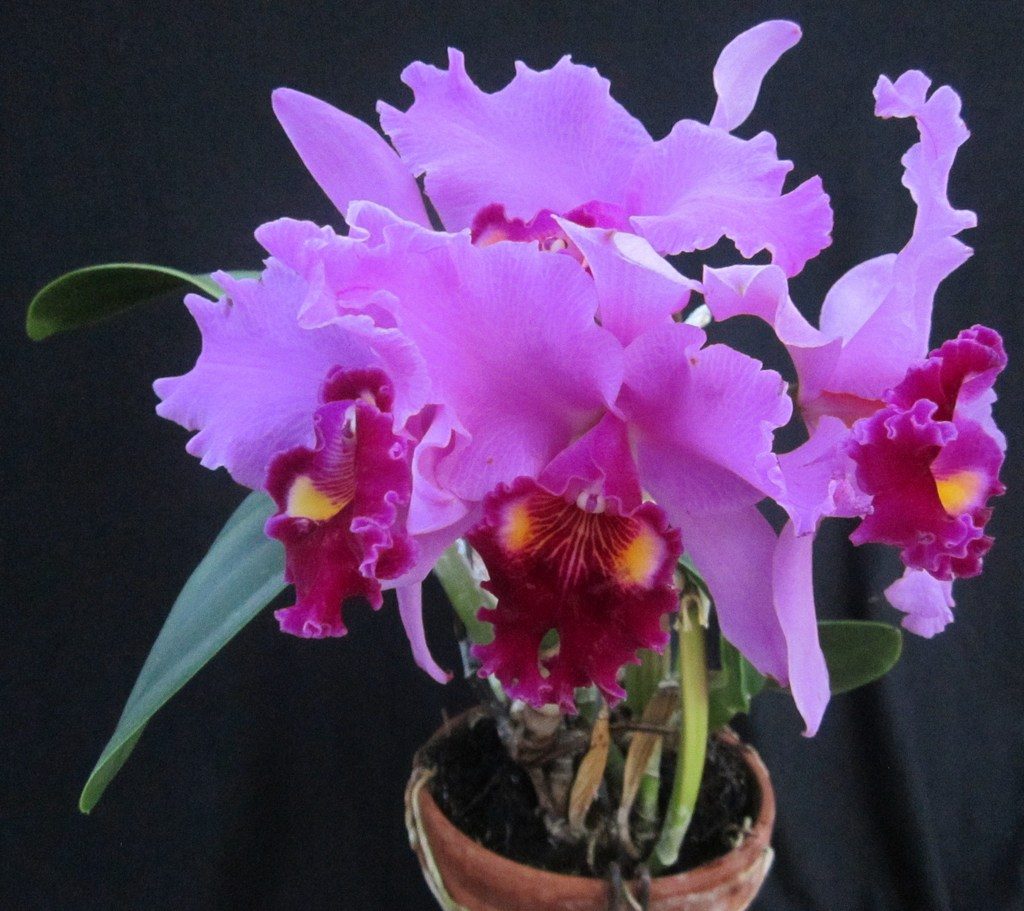
Content
Plant description
The plant belongs to the genus Orchids. Under natural conditions, the flower grows in the humid tropics of America. Thanks to a sufficiently developed root system, the plant can fully tolerate drought.
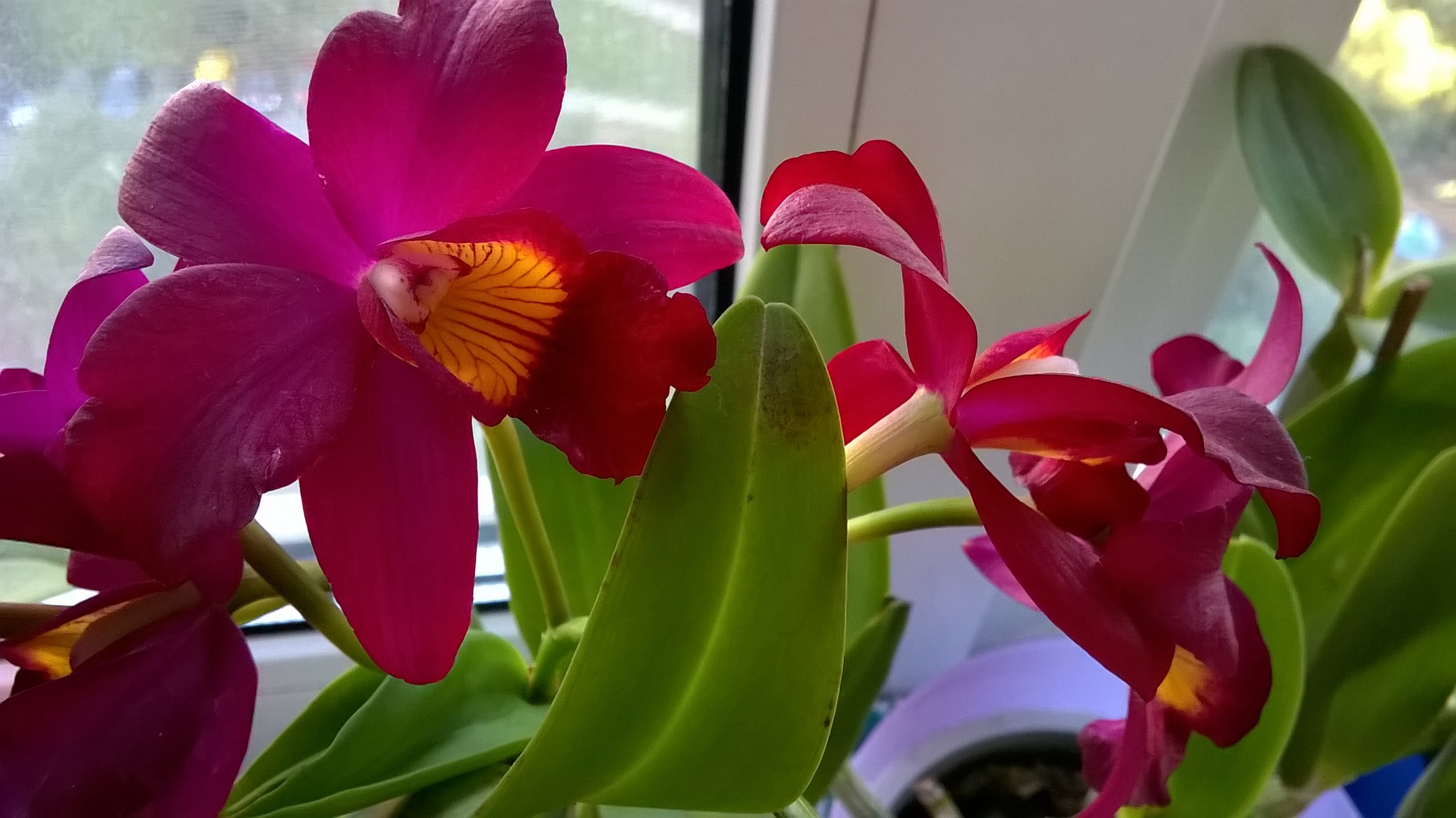
A "potted pet" is characterized by the presence of long and thickened pseudobulbs, the size of which is more than 15 centimeters. In length, dense leathery foliage can reach 30 centimeters. The culture has rather large flowers. One peduncle can have up to 5 flowers. They are characterized not only by a beautiful shape, but also by a pleasant aroma.
Plant varieties
To date, breeders have bred a large number of hybrid flower forms.
The most popular types of Cattleya include:
- Hybrid... It was bred by crossing various varieties of orchids.
- Imperials... This Cattleya variety is a fairly popular white flower. It is characterized by the presence of curly petals and lips. It is a richly flowering plant and is characterized by rapid growth.
- Margaret... The flowers have crimson-purple petals. Flowering occurs twice a year.
The Cattleya Orchid is an original flower, which is characterized by the presence of several varieties, which makes it possible to choose the most acceptable option for the grower.

Growing conditions
In order for the orchid to have regular flowering and in order to prevent various diseases, it is required to grow the Cattleya orchid under optimal conditions for it.
| Conditions | Requirements |
| Lighting | The flower is a tropical plant and therefore requires constant bright lighting. It is better to grow Cattleya orchid in summeron the southwest and southeast windows. Adult flowers can fully withstand direct sunlight for several hours.
Determination of the sufficiency of lighting is carried out by the color of the foliage. With a loss of gloss and the appearance of a yellow-green tint on the foliage, it is required to limit the exposure of the flower to direct sunlight. If the leaves are dark green, then this indicates a lack of lighting. In winter, do not reduce the length of daylight hours. This is done using special fluorescent lamps. Additional lighting will ensure the full bloom of the orchid in spring. |
| Temperature | The orchid grows fully in conditions of ordinary room temperature. In the summer, overheating of the flower should be avoided. If the foliage heats up, then wipe it with a damp cloth.
In order for the peduncle to form in the cover, it is required to lower the temperature. The flower will feel most comfortable at a temperature of 16 to 20 degrees. In order to stimulate the flowering of the culture, it is recommended to provide a daily temperature drop of 5 degrees. |
| Humidity | The flower is undemanding to the level of humidity. But in the summertime, it is recommended to place the Cattleya pot in a tray that is pre-filled with water. This will ensure the full formation of the root system. |
Seedlings are grown under the same conditions as adult plants. In this case, it is necessary to limit exposure to direct sunlight, as this can lead to burns and death of the plant. Lighting should be bright, but diffuse.
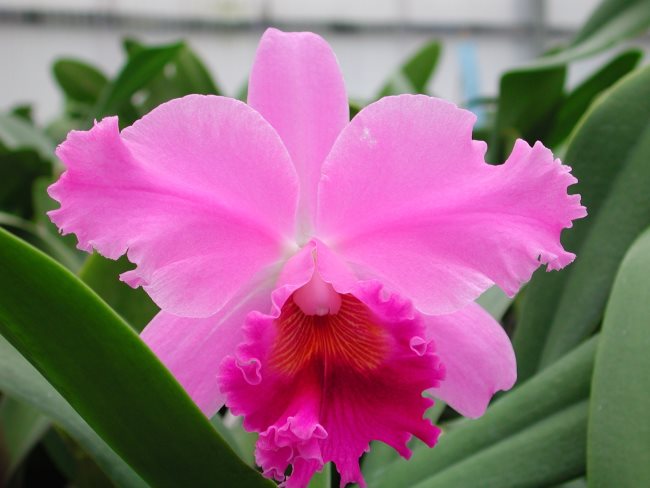
Features of landing and transplantation
The Cattleya Orchid does not like transplanting. After carrying out this procedure, a rather long recovery of the flower is observed. Before replanting Cattleya, it is necessary to determine the state of the substrate. If the soil is dense and oxidized, it is best to transplant.
Note! During the period of the Cattleya transplant, it is required to ensure that no more than 5 pseudobulbs remain in the pot.
- The culture is planted in a soil mixture, which consists of the bark of small and medium fractions, as well as sphagnum moss.
- Two days before planting the Cattleya, the bark is soaked in water.
- After this time, the water is drained and the bark is mixed with the foam, which is good drainage.
- After planting Cattleya, the root system must be sprinkled with bark. In excessively dry indoor air, perlite is added to the substrate.
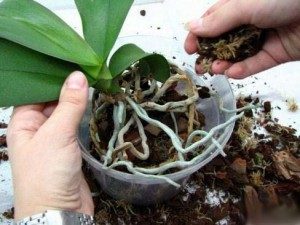
Cattleya is not demanding on pots. That is why ceramic, glass or plastic dishes can be used to plant it. For Cattleya, it is best to opt for simple unglazed clay pots.
Video: Cattleya transplant from A to Z
Care and cultivation
In order for the Cattleya orchid to bloom regularly, as well as to grow fully, it is recommended to provide appropriate care for it at home.
To achieve these important phenomena, the florist needs to take certain care steps.

Watering and feeding
In the summer, it is necessary to water the Cattleya as often as possible, because during this period the plant needs abundant watering. Its need is determined by the level of drying out of the substrate.
Important! During the procedure, you need to make sure that water does not get on young shoots. That is why, when conducting top watering, it is recommended to pour directly into the substrate.
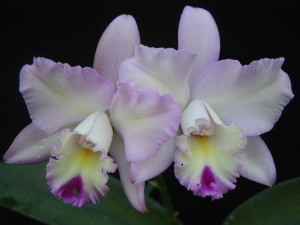
After the covers have ripened, it is recommended to water the Cattleya in a smaller volume. During the period of growth and development of peduncles, the frequency of the procedure should be resumed.
When using high-quality water, it is allowed in the summer to carry out not only watering the substrate, but also spraying the plant itself.
By the way! A warm shower treatment is performed once a month.
It is also recommended to irrigate under running water, which will facilitate soil flushing.
If water gets on the foliage during watering in winter, it should be wiped with a dry cloth, which will eliminate the possibility of brown spots.
When pseudobulbs begin to grow, the Cattleya needs fertilization. After the growth and development of the flower stops, the procedure is not performed. The renewal of fertilizers is carried out during the growth of pseudobulbs.
Flowering period
In order for a pet in a pot to bloom, it must provide appropriate conditions. The flower needs direct sunlight. To avoid burns on the crop, it must be installed in a location where it will only be exposed to sunlight for a few hours a day. When placing a plant on a north window, additional lighting is required.

Often, flower growers are faced with a strange circumstance - the Cattleya orchid does not bloom. But the problem can be solved, and you can still see the long-awaited flowers.
Why doesn't Cattleya bloom? It's all about inadequate and inadequate care.
How to stimulate the flowering of Cattleya? In this case, it is recommended to make sure that there is a temperature fluctuation of 7 degrees in the morning and evening. This factor will stimulate the flowering of the Cattleya.
To ensure flowering in summer, the flower must grow actively. For this purpose, fertilization is carried out under it. In this case, the use of mineral fertilizers is recommended.
In the initial phase of growth, it is better to apply nitrogen fertilizers several times. At the end of the period, phosphorus and potassium are added, which will contribute to the formation of bulbs.
Dormant period
During the rest period, the flower is gaining strength, therefore it is recommended to provide quality care for it. If flowering is observed in the autumn, then the culture will rest until spring.
During the dormant period, the plant is provided with full lighting. And also the flower needs cool conditions. During this period, rare watering of the orchid is carried out (it will be enough 2 times a month).
Note! In this condition, fertilization is strictly prohibited.
To prevent the possibility of rot development, it is necessary to stop spraying the flower. During the rest period, it is recommended to carry out regular air humidification. For this purpose, a container with wet expanded clay is installed near the plant. If necessary, supplementary lighting is carried out using a phytolamp.
Diseases and pests
If the Cattleya orchid is provided with the wrong conditions of maintenance or improper care at home, then this can lead to the development of various diseases and the appearance of pests.
| Name of the disease | Control measures |
| Gray rot | Foliage with the appearance of such a disease is covered with dark islands with a fluffy bloom.The disease is observed if the flower is not properly looked after. The most common causes of the disease are high humidity and low temperatures. When a disease occurs, Cattleya is recommended to be sprayed with fungicides. If there is a relapse of the disease, then its treatment is carried out using other types of fungicides. |
| Black rot | The disease is observed if the flower is at an excessively low temperature for a long time. And also pests are the cause of the appearance of Cattleya disease. When a disease appears, the affected areas are necessarily removed. It is recommended to use Bordeaux liquid to treat the cut points. In order to eliminate the disease, the plant is transplanted. In this case, it is imperative to replace the substrate. |
| Powdery mildew | Cattleya disease is accompanied by the appearance of a gray bloom not only on the foliage, but also on the buds of the plant. If the disease is not treated in time, the flower may dry out. High temperature and humidity are often the causes of illness. Treatment of the disease is carried out with colloidal sulfur. |
| Bacterial spot | The disease is accompanied by yellowing of the foliage and the formation of dark spots on the leaves of the cattleya. When the disease appears, the lesions are cut with a knife. Slices must be processed using iodine. This drug can be replaced with Bordeaux liquid. |
If the Cattleya orchid is kept in improper conditions and is not properly cared for, it can lead to the appearance of pests. Most often, the appearance of aphids, spider mites or scale insects is observed on the Cattleya. For pest control, it is recommended to use appropriate insecticides in accordance with the instructions.

How to grow roots: Cattleya resuscitation without roots
It often happens that the Cattleya orchid is left without roots. Many growers are faced with such an unpleasant phenomenon and want to know how to solve this problem. But even when faced with this, everything can be easily fixed. The fact is that thanks to the vitality of Cattleya, you can easily grow its roots, but you need to know how to do it right.
In order to reanimate the cattleya without roots, it is recommended to place the flower in water with a growth stimulator. When the first roots appear, the orchid is planted in a pot with a nutritious substrate.
And also the opportunity is given to plant the culture directly into the substrate. The flower is pre-soaked for several hours in a solution of a root growth stimulator.
After resuscitation of the rootless Cattleya and planting it, it is provided with optimal conditions and appropriate care.
Breeding methods
Cattleya can be propagated by dividing the bush and by children.
Reproduction by dividing the bush
Reproduction of the Cattleya orchid in most cases at home is done by dividing the bush. This procedure is performed once every 2-3 years during the transplant.
- Initially, it is necessary to fill the substrate with high quality water.
- After that, the flower is removed from the pot as carefully as possible.
- The next step is to wash the roots of the orchid.
- Further, the bush is divided into several parts using a sharp clerical knife.
- It is mandatory to treat the cut sites with wood ash or potassium permanganate solution, which will eliminate the possibility of developing diseases.
Reproduction by children
Since babies are formed in Cattleya, they can also be used for breeding at home.
- For this purpose, the shoots, which have several leaves, are separated from the mother plant.
- The baby Cattleya must be placed in a growth stimulator for several hours, and then planted in a substrate.
- After planting, she needs to ensure the optimal temperature, lighting and watering.
Cattleya is a unique orchid variety that can enchant anyone with its attractiveness.Cattleya is characterized by unpretentious care at home, which makes it possible to grow it to any interested florist.


Along with useful facts about growing Cattleya, the article is overly verbose and pretentious about the most common moments. like "The frequency of repetition of the procedure - 2 times a month" - and we are talking about simple watering. Pseudoscientific language is wildly pissed off.